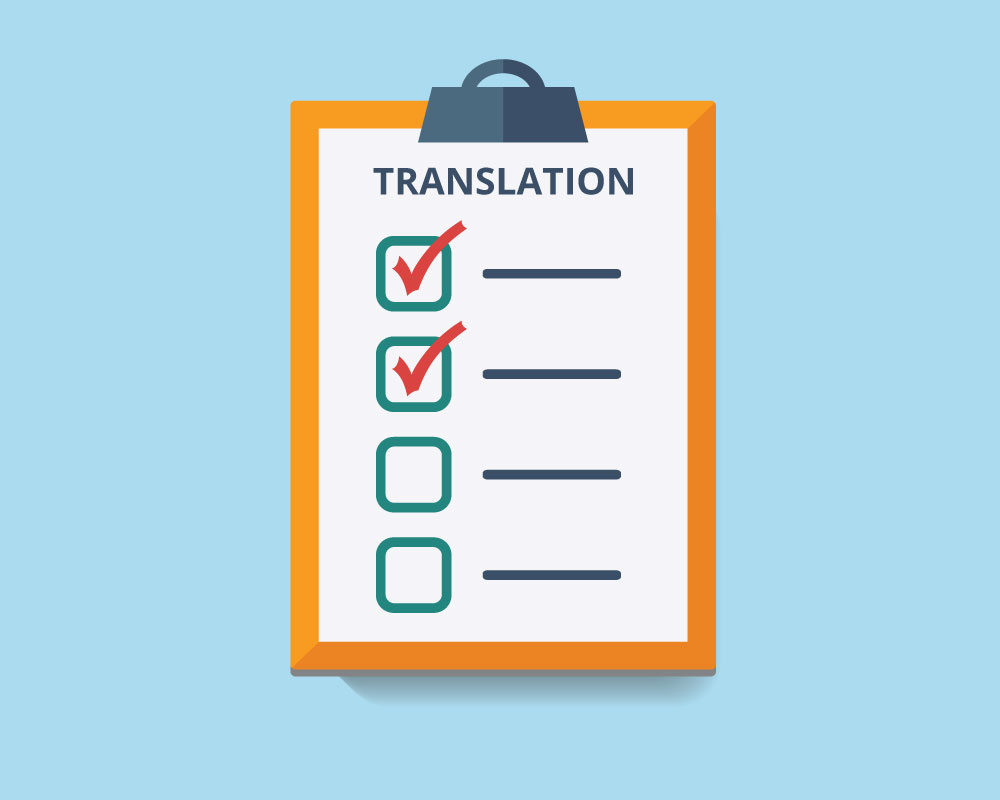The Ultimate Checklist for Translators
|
Font size:
There are several widely held myths about translation. Many mistakenly assume it’s an easy process that simply involves scanning a text and reproducing it in another language. In fact, translation requires skill, expertise, time, effort and research. In order to provide high-quality results, professional translators should use a checklist to ensure the delivery of accurate copy that meets the needs of the client.
1. Understand your Project
When you receive a translation assignment from your project manager, make sure you properly review the instructions that come with the job. You don’t want to get involved in something you don’t fully understand, so double-check the client’s brief to confirm that everything is clear and then verify that all appropriate files and documents are attached.
2. Consider the Context
When it comes to translation, context is key. Professional translators are usually experts in particular fields, so make sure that the project you receive is right up your street. Always confirm that you’re comfortable and familiar with the subject matter. You should be able not only to translate the words accurately, but also to ensure that they make perfect sense in context. Each industry has its own lingo and jargon – do you understand all the terminology? Are you experienced in that specific field? Ignoring context always results in misunderstandings, so let your project manager know if you’re uncomfortable with any aspect of the task.
3. Do Your Research
You may be an expert in a particular industry, but sometimes nearly everyone needs that extra bit of guidance. If the subject matter of the source text is new to you, do some research about it. Is it a restaurant review? Scour the internet for its competitors and have a look at their style and terminology. Is the text about an exciting new technology? Identify relevant reference sources online as well as closely related websites. These are always a good starting point in providing excellent translations.
4. Provide Personality
A document that has been translated word for word is seldom appreciated. Try to give the content some personality and perhaps even a little twist when translating it from one language to another. A skilled translator will create a text that feels as though it’s an original. Of course, you need the source text as a basis, but at some point you should distance yourself from it in order to give the final piece some character and individuality. Unless requested by the client, translating a document word for word can appear lazy and even careless. Enhance your reputation by adding some flow and creativity to every text.
5. Be Consistent
Received a project from a client you’ve worked for previously? It’s essential that you are consistent in your translations. A client invariably want to protect their brand by maintaining the same values across their communications and by not confusing their audience with mixed messages. It’s therefore recommended that you stick to the same writing style and use similar phrases throughout. Use the same tone throughout the text and make full use of translation memory tools. These programs help identify similarities between your new content and any previously translated texts, saving you time and ensuring brand consistency for the client.
6. Give Feedback
Want to be perceived as a serious and efficient translator? Provide feedback! If you find any errors in the source text, problems with the brief, or if you notice that there are inaccuracies in the translation memory database, inform your project manager. If the word count or the deadline is a concern, let them know as early as possible. Honesty really is the best policy! You don’t want to rush a job and give yourself a bad reputation. It’s also a good idea to leave polite notes or comments when delivering the document regarding wording, formatting or other important components. Feedback is always appreciated by both the project manager and the client, as it helps them improve and build quality in the long run.
7. Proofread. Then Proofread Again
Finished your translation? Brilliant! Now it’s time to proofread your work. Start by spellchecking and correcting any typos. This might seem obvious, but you’d be surprised at how often this gets forgotten by writers and translators. Once you’ve checked that your text is free of spelling and grammatical errors, read over your document again and compare it to the source text to make sure you haven’t missed or mistranslated anything. Don’t ignore your CAT tool when it detects missing text, untranslated segments, double spaces or missing words and numbers. You should also ensure that you haven’t repeated any key phrases, as this will make the text less compelling. This is the only downside of translation memory tools, which can often throw up the same word or phrase more than once within the same text. The final document has to make sense in the target language and read as though it was originally written in that language, so if time permits, take a break, work on another task and then do a final review of your translated copy with fresh eyes.












